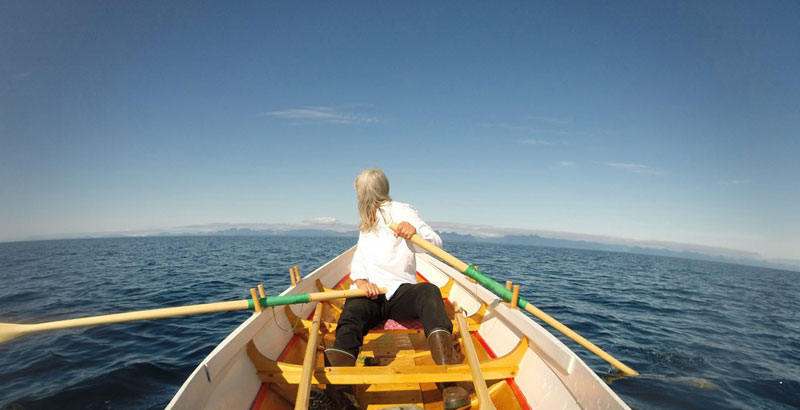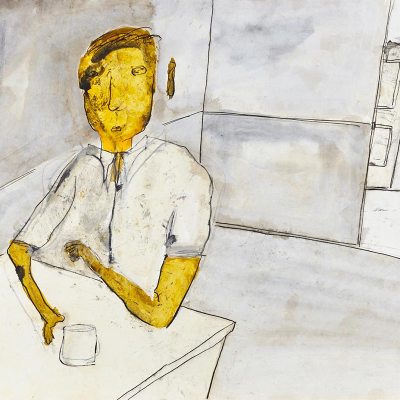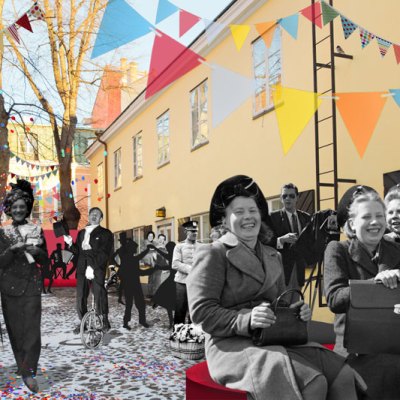What is the purpose of an art prize? As in the worlds of film or architecture, art prizes exist primarily to bestow the appearance of an objectively verified stamp of quality on an otherwise highly subjective industry. A prize enables commentators and decision-makers to praise an artist or a work without having to resort to making value judgments of their own. But prizes serve many other functions too: they may boost media coverage; drum up debate; or polish the reputation of a sponsor. Some seem less about an award’s recipients than the institution doing the awarding.
In November, Vanessa Baird was announced as the winner of the Lorck Schive art prize, Norway’s biggest and, at 500,000 NOK (£38,000), comparable to the UK’s Turner Prize. An exhibition of the work of the four finalists is currently at the Trondheim Kunstmuseum (until 28 February). It’s an appropriate choice of venue because the prize is inextricably linked to the city itself. A year before his death in 1879 Christian Lorck Schive – a wealthy local landowner – established a trust in order to support artists in Norway. The area owned by the trust is known as Bakklandet, on the east bank of the river Nidelva that runs through the centre of Trondheim. The area is now home to sundry cafes, restaurants, craft shops and the like. It is their rent that funds the Lorck Schive prize.
Holding the exhibition in Trondheim also shines a light on the art scene here. For a city with a population of just 180,000, it is surprisingly lively and diverse, with museums, art schools (one fifth of the population are students), independent spaces and publicly funded artist studios. Trondheim Kunstmuseum has two impressive locations at opposite ends of the city. At the other end of the scale is RAKE – run by an artist and an architect in an idiosyncratic space made of reused materials from a demolished office block.
There are several other impressive non-profit art spaces too: Trøndelag Senter for Samtidskunst, run by local artists organisations; Galleri Blunk, an atmospheric two-room space founded by students from Trondheim Academy in 2002; and Babel, run by Lademoen Kunstnerverksteder (LKV) who also organise residencies in a lighthouse and manage an impressive studio complex in an imposing former school-house in the east of the city. In the week I’m in Trondheim, artist Sanna Lindholm has driven over from Sweden for a three-day solo show at Blunk. Her beautifully crafted sculptures pay homage to female-dominated professions such as nursing and cleaning in order to explore the relationship between labour and value.
‘The art scene is not big but it is very inclusive,’ says Karoline Sætre, one of the artists who runs Blunk. In a way it reflects the city itself, whose ancient centre (including the northernmost Gothic cathedral in the world) is surrounded by reclaimed lands, a hill-top fort, snazzified former docklands, and old industrial areas now populated by artists. It feels like a place characterised by community, openness and opportunity.
But it has not always been this way. ‘Artists used to leave Trondheim after they had finished university here,’ says artist Karianne Stensland. ‘Now people stay.’ Stensland, whose studio is housed in the LKV building, works across text, drawing, performance, video and installation. Her work has been exhibited widely, including earlier this year at the Royal British Society of Sculptors in London. But she is also a champion of the local art scene: she studied at the university here, and was then part of a collective that ran an arts space in the west of the city between 2005 and 2010. She currently has a solo show at Trøndelag Senter for Samtidskunst (until 20 December) as well as a fascinating video piece in ‘Meshes of the Afternoon‘, a strong group show exploring landscape at Kunsthall Trondheim’s temporary exhibition space (until 13 December).
Scheduled to open in a former fire station for autumn 2016, the new Kunsthall Trondheim will be a valuable addition to the city. Already, the small temporary space has played host to work by artists from Norway, Sweden, Taiwan, Serbia, Hungary, Croatia and the United States. The aim for the future, says director Helena Holmberg, is to ‘integrate local artists in an international context’. ‘It’s important,’ she says, ‘not only to build a new space but also to make a context for things to happen.’
The Lorck Schive art prize is part of this same logic. Until 2013, the Lorck Schive money was spent on stipends for artists, but the artists’ unions decided that there were already enough such opportunities available from the state, and pushed instead for the establishment of a prize. Four Norwegian arts organisations nominate a longlist of 10 artists; a shortlist of four is then selected by the Lorck Schive board; and an international jury pick a winner. The stated aim is ‘to generate debate and interest around contemporary art by honouring excellent artists.’
‘Excellence’, as I’ve noted before, is one of the buzzwords of neoliberalism. The term has regularly been used to justify the process by which state funding for the arts is cut and the existence of the majority of artists becomes increasingly precarious. Norway, however, with its vast oil wealth, currently seems able to have its cake and eat it. Some artists here receive state-funded salaries guaranteed for up to a decade. Even the centre-right coalition government has not significantly reduced arts funding. But the plummeting price of oil has brought the realisation that Norway’s glory years may not last forever.
In the meantime, however, the focus is both on bringing interesting international art to Norway and on showcasing Norway’s artistic strength on the global stage. Perhaps the best example of what international artists can bring to a local art scene is back at the main building of Trondheim Kunstmuseum, where ‘Martin Tebus – Collection’ spreads across the remaining galleries (until 28 March). Unlike so many examples of institutions simply importing the much-travelled crowd-pleasers of international ‘big names’, here there has been genuine engagement on the part of the Swedish artist, who presents his own work ‘in dialogue’ with art from the collection. It certainly demonstrates far more imagination and sensitivity than the Grayson Perry ego-trip at the British Museum back in 2011–12.
This is the largest presentation of the Kunstmuseum’s collection in its 150-year history and includes work by the likes of Goya, Hokusai, Munch, and Picasso. Tebus has responded directly to the collection by hand-colouring black-and-white cut-outs from old museum catalogues. He has also curated the exhibition with real flair: by dividing the collection into 18 unexpected themes (like Hiking, Food in Context, Interiors and How to Use Them, and the amusingly brilliant Cow Parade), Tebus creates unusual groupings that transcend art-historical periods without the need for elaborate theorising. In fact, wall text is non-existent: visitors can see the parallels for themselves; what they mean is up to them. In Full Moon in Motion, the rise and fall of the moon across multiple paintings hung along the length of a narrow corridor is a visual triumph. Meanwhile, there’s a neat moment in the small Open Studios room. We see a sculptor modelling a bust in the presence of his model. It has been drawn by Picasso, then copied and hung by Tebus: a mis-en-abyme of artists responding to the work of their predecessors, back through the ages of art history.
If the Lorck Schive art prize can help to highlight and encourage such work, then Trondheim is set to become an increasingly important city on the international art map.





